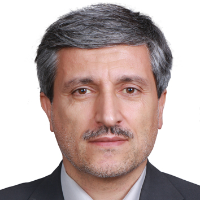Investigating the Comparison of , Physical-Spatial and Social-Economic Mehr Houses from the Perspective of Residents(Case study: Sahand new city of Tabriz and Golbahar city of Mashhad)
With the implementation of the "Mehr Housing" policy, in order to provide housing for the low-income groups, structural-physical and socio-economic problems emerged; Feelings of social inequality and spatial segregation (due to dependence on the neighboring metropolis) of residents are among the issues that have been less researched despite their importance. This study aims to identify the relationship between the physical structure of Mehr housing complex and its socio-economic structure, and explores the relevant responses of residents.
The research was performed by comparative method in two independent samples with a volume of 50 (Mehr housing in the new city of Sahand Tabriz and Golbahar city of Mashhad) by cluster method in different phases of the project. The data were analyzed descriptively and inferentially using SPSS.20 software. First, to test the normality of the data, the Kolmogorov-Smirnov test was used and the test results confirmed that the data were normal. Therefore, the main hypothesis of the research was tested by t-test.
According to the findings, there is a direct and significant relationship between spatial structure of Mehr housing development (25 main items) and its social structure (14 main items) (Pearson coefficient 0.68). The study of the samples with t-test shows that despite the significant difference in data in social and environmental dimensions (with more mean in Golbahar-sample) and service and economic dimensions (with higher mean in Sahand sample), but physical dimensions has a relatively similar condition in the samples. Also, in general, according to the computational averages of t-test, there was no significant difference between the components of "physical-spatial " and "socio-economic" structures, and despite the average to low computational score in both groups, in the Golbahar sample with a small difference, a higher score was estimated.
Based on the results, significant discrimination in providing services and access to urban facilities, along with spatial remoteness, has played an important role in the formation and intensification of feelings of social inequality and spatial separation of these complexes. Thus, by modifying the identified differences between the two samples studied and trying to obtain the satisfaction of residents in providing the services they need, we can take a step forward in the development of this type of housing pattern. Undoubtedly, since this housing model is commensurate with the income level of the households living in it, by providing ancillary services and especially meeting the easier transportation context, it is possible to provide the satisfaction of the residents of the complexes. Also, accuracy in terms of local requirements of each city and attention to the design of appropriate housing can be very important because as mentioned, it is not possible to implement a fixed pattern in different urban areas of the country and the need to localize the model always will be raised.
-
The Analytical Revising of Function and Relative Dating of the Stepped Structure at Rabʿ-e Rashidi
Mojtaba Roshan, Bahram Ajorloo, Mohammadtaghi Pirbabaei *
Bagh-e Nazar, -
Study of changes in the concept of housing in accordance with the new urban lifestyle with an Islamic approach
Sedaghati Atefeh*
Culture of Islamic Architecture and Urbanism Journal, -
بازشناسی مفهوم سکوت ذهن و بازتاب آن در کالبد بناها (مورد مطالعه: چینی خانه خانقاه شیخ صفی الدین اردبیلی)
*، محیا خیرخواهی، آزیتا بلالی اسکویی
نشریه مطالعات عرفانی، پاییز و زمستان 1401 -
Explanation the Role of Patterns of Complexity - Order in Geometry of Contemporary Architecture
Ahmad Mirahmadi *, , Leila Medghalchi
Journal of Interdisciplinary Studies in Iranian Architecture,



